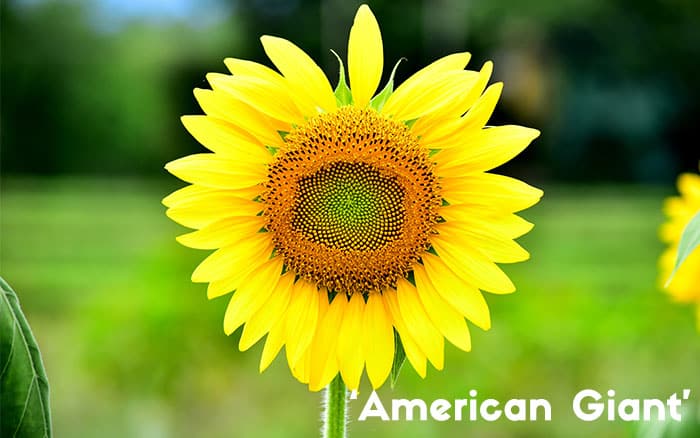Sunflowers are undeniably cheerful. With their sunny faces tracking the arc of the sun across the sky, they bring a burst of joy to gardens, patios, and allotments. These botanical giants aren’t just beautiful. They’re incredibly rewarding to grow.
In this guide, I’ll walk you through every step of growing and caring for sunflowers in the UK.
Choosing the right sunflower variety
There are over 70 species of Helianthus, but the most common cultivated variety is Helianthus annuus. For UK gardens, the choice of cultivar makes a big difference.
- Tall varieties like ‘Russian Giant’ or ‘American Giant’ are perfect for dramatic borders.
- Dwarf varieties such as ‘Little Dorrit’ or ‘Sunspot’ suit containers and small spaces.
- Multi-headed types like ‘Valentine’ offer an extended flowering period.
Soil Preparation
Sunflowers thrive in well-drained, loamy soil with a pH between 6.0 and 7.5. In horticultural terms, they are calcicole plants, preferring neutral to slightly alkaline soils.

Improve poor soil by digging in organic matter like well-rotted compost. Sunflowers are heavy feeders, so supplement the soil with a slow-release organic fertiliser. Ensure they are rich in potassium and phosphorus (K and P), two nutrients essential for flower formation and root development.
According to recent trials, incorporating mycorrhizal fungi into planting holes can increase root mass by up to 75%. This significantly improves drought resistance and nutrient uptake.
Sowing Seeds
In the UK, sow sunflower seeds from mid-April to late May once the danger of frost has passed.
- Indoors: Start seeds in 9cm pots on a sunny windowsill or in a heated greenhouse (minimum 15°C).
- Outdoors: Sow directly in situ once the soil has warmed (ideally 10°C+), spacing seeds 45cm apart for tall types.
Germination typically takes 7–10 days. Once seedlings develop two true leaves, thin them out, keeping only the strongest.

Planting out and support
Harden off indoor-grown seedlings by gradually exposing them to outdoor conditions over 7–10 days. Plant them out in a sunny, sheltered spot with at least 6–8 hours of direct sunlight daily.
Tall sunflowers require support. Insert a bamboo cane next to the stem and loosely tie it with soft twine. This prevents lodging, a horticultural term to describe plants falling over due to wind or weight.

Watering and Feeding
Sunflowers are thirsty plants, especially during their vegetative growth and flowering phases.
- Water deeply twice a week rather than little and often, encouraging deeper root growth.
- During flowering, apply a weekly feed of liquid seaweed or homemade nettle tea for a potassium boost.
Transpiration rates in sunflowers can exceed 1 litre per day in hot weather. Morning watering reduces moisture stress and helps prevent fungal issues.
Sunflower Pests and Problems
Avoiding chemicals, the key to healthy sunflowers lies in prevention and biodiversity.
- Slugs and snails target young seedlings. Use copper rings, crushed eggshells, or create a barrier with horticultural grit.
- Aphids may cluster on stems. Encourage ladybirds and lacewings. Nature’s pest patrol.
- Birds love young sunflower shoots. Cover with cloches or fine mesh until established.
Regular observation is your best defence. Remove any affected leaves to prevent the spread of fungal spores like Alternaria or Rust.

Harvesting Sunflower Seeds

Sunflowers don’t just offer ornamental value. They’re also edible and wildlife-friendly.
To harvest:
- Wait until flower heads droop and backs turn yellow-brown.
- Cut the head and hang it upside down in a dry, airy space.
- Once fully dry, rub seeds out by hand or over a sieve.
Leave some heads in place as natural bird feeders. Goldfinches and sparrows will thank you!
Overwintering and Composting
Sunflowers are annuals, so once flowering is over, cut back the stems and add them to your compost heap. They break down quickly and contribute rich carbon material.
If saving seeds for next year, store them in a paper envelope in a cool, dark place. Don’t forget to label them!
Growing sunflowers is a joyful journey from seed to bloom. With the right preparation, care, and a little patience, you’ll be rewarded with towering blooms that are as valuable to pollinators and birds as they are to your garden’s beauty.
For more great gardening advice, make sure you head to my YouTube Channel. Make sure you’re subscribed with notifications on so you don’t miss any of my new videos.
Frequently Asked Question
1 – When should I plant sunflower seeds in the UK?
In the UK, sow sunflower seeds from mid-April to late May, once the risk of frost has passed. Sow indoors in 0cm pots or directly outside once soil temperatures reach 10°C or more.
2 – What type of soil is best for growing sunflowers?
Sunflowers thrive in well-drained, loamy soil with neutral to slightly alkaline pH (6.0-7.5). Improve poor soil with compost and slow-release organic
3 – Do sunflowers need support as they grow?
Yes, especially tall varieties like ‘Russian Giant’. Use a bamboo cane and tie the stem loosely with soft twine to prevent the plant from falling over (a process called lodging).
4 – How do I protect sunflower seedlings from pests?
Use copper rings or crushed eggshells to deter slugs and snails. Cover seedlings with cloches or mesh to keep birds away and encourage natural predators like ladybirds to control aphids.
5 – How and when do I harvest sunflower seeds?
Harvest sunflower seeds once the flower head droops and the back turns yellow-brown. Cut the head, dry it upside down, then rub the seeds out by hand or using a sieve. Store seeds in a labelled paper envelope in a cool, dark place.


Leave A Comment